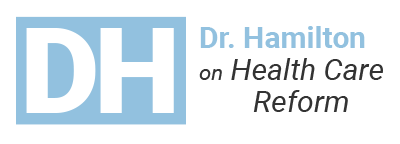In 2017, after Congress failed to enact a health care reform bill to modify or replace the Affordable Care Act, President Trump signed an order to promote health care choice and competition by issuing three health care rules increasing more affordable insurance options, primarily for the benefit of middle-income families and small businesses and their employees.
Together, these three rules constitute the Final Rule and represent the work of the Department of Labor, Health and Humans Services (HHS), and the Treasury. Much of what follows is taken from a paper by Brian Blase entitled Health Reform Progress Beyond Repeal and Replace. He was a special assistant to President Trump at the National Economic Council from 2017 to 2019, focusing on health care policy, and is now a Senior Fellow at the Galen Institute.
The First Rule, Association Health Plans (AHP – June 2018) provides a way for smaller employers (less than 50 employees) and the self-insured to gain the tax advantages granted to employees of larger businesses.
Because of the complexities of offering these tax advantages in the face of prior federal laws such as the Affordable Care Act and ERISA, some state laws, and the possible effects of adverse selection on current individual policies, Crowell/Moring likens the AHP plans to “Running with Scissors”. There is controversy about definitions and limits of the word “employer” and “Association”, phrases like “commonality of interest”, the rights and protections of employers and employees, and the geographic and industrial limitations of the Associations.
The attorneys general of eleven states have filed a lawsuit over the definition of the word “employer”. Several national and state organizations, including the AMA, support the suit. Several more states and organizations support the Rule. This should be interesting, but in the meantime, many states are busily formulating and implementing their own AHP plans, while awaiting the verdict of the courts on this issue and others that will probably arise.
The second Rule (August 2018) expands our patients’ ability to purchase Short-Term, Limited-Duration Insurance (STLDI). STLDIs have been available for decades and are most useful for the approximately 30,000,000 people, who are uninsured or between jobs and can’t afford high premiums. Previously STLDIs lasted 364 days and did not have to conform with ACA coverage mandates. The Obama administration reduced the duration of coverage to 90 days. Rule 2 restored the 364-day contract duration.
In addition, STLDIs can be combined with health status insurance, which John Goodman advises can be used as a form of permanent insurance.
The third Rule (June 13, 2019) expands HRAs by creating two new types of HRA, Individual Coverage Health Reimbursement Accounts (ICHRA) and Excepted Benefit Health Reimbursement Accounts (EBHRA). In an ICHRA, the employer contributes tax-free money to the employee’s HRA, which can then be used to set up an HRA plan. The ICHRA effectively eliminates the tax advantage that large company employees have had over those working for employers with fewer than 50 employees. ICHRAs offer more flexibility for the employer and the employee, and many employees will opt for an ICHRA over the traditional plan offered by the employer. ICHRAs will also be available to employees of large companies and will be useful for part-time and hourly workers and others.
The administration projects that ICHRAs will be offered by 800,000 employers (90% with less than 20 workers) and to 11,000,000 employees. The individual insurance market will increase by 50%, and the number of uninsured people will decrease by 1,000,000.
Excepted Benefit HRAs (EBHRA) will be offered to those workers who reject employer-sponsored insurance (ESI) because they consider it a poor value. In 2017 the Kaiser Family Foundation estimated 3.8 million out of 27.4 uninsured workers rejected their ESI. They can use the HRA funds to purchase a STLDI plan or for special coverage such as vision or dental. The EBHRA is presently capped at $1,800.
HRAs can now be offered to people with chronic conditions to pay for a list of preventive services and medications below the HRA plan deductible.
The Final Rule is in effect but will require Congressional codification to become permanent and safe from the whims of a future administration.





